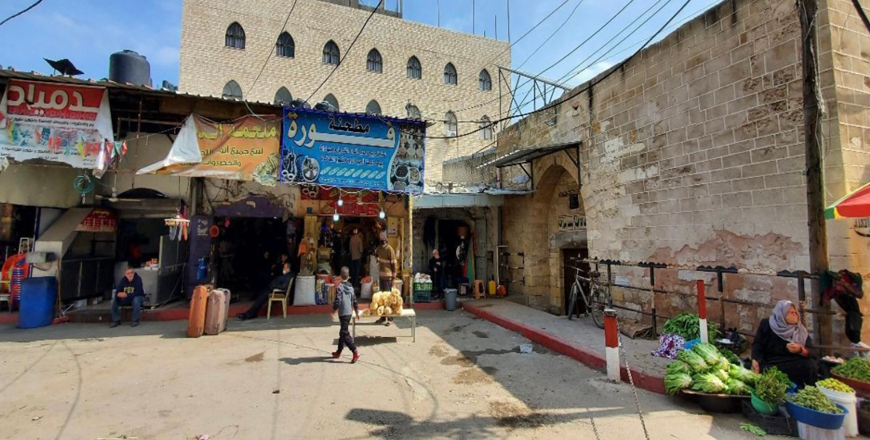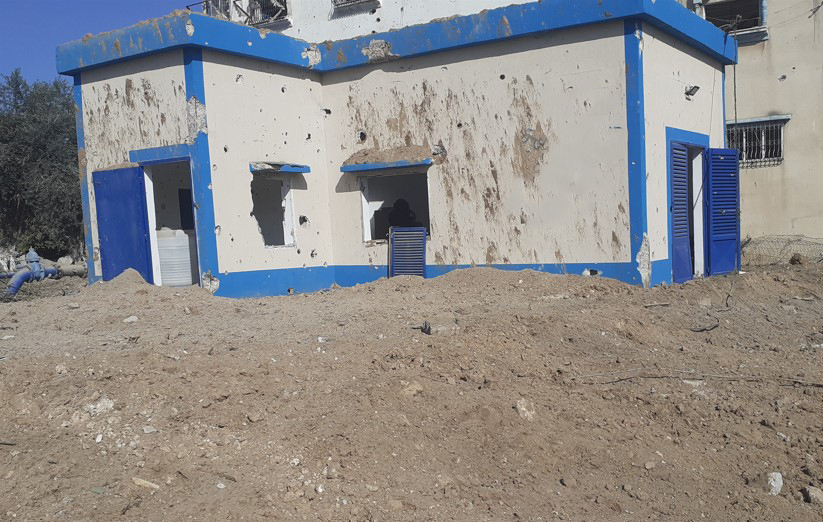
English bellow
نقلا عن صحيفة جوردن تايمز
تنبيه تراثي: دمار ثقافي في سوق غزة التاريخي
عمان: كان سوق الزاوية، ذات يوم، شرياناً نابضاً في قلب مدينة غزة القديمة، ورمزاً للحياة المجتمعية والتجارة واستمرارية الثقافة. وقد تموضع السوق على طريق تجاري عريق يربط آسيا بأفريقيا، فكان السوق الأكبر في غزة وواحداً من أكثر معالمها التاريخية أهمية.
يمتد السوق لمسافة تزيد عن 250 متراً، ويضم 65 مبنى وأكثر من 1,150 متجراً، وقد شكّل شريان حياة لآلاف السكان ومصدر رزق حيوي لأجيال متعاقبة. وقد تأسس في الحقبة المملوكية، وارتبط بمعالم إسلامية تاريخية بارزة مثل المسجد العمري الكبير، وحمام السمرا، وقصر الباشا، ما أكسبه قيمة معمارية تعكس عمق التاريخ المتجذر في المدينة.
إلا أن هذا الإرث أصبح اليوم ركاماً، نتيجة القصف الجوي والمدفعي المتواصل خلال الحملة العسكرية الإسرائيلية التي بدأت في أكتوبر 2023.
وقال أيمن أبو شعبان، مدير عام الخدمات الحضرية ونظم المعلومات الجغرافية في بلدية غزة، لصحيفة "جوردان تايمز":
"لم يكن استهداف السوق مجرد قصف لمكان تجاري، بل كان ضربة مباشرة لمعلم ثقافي يحمل قيمة اجتماعية واقتصادية، ويُعد جزءاً من النسيج التاريخي والمجتمعي لمدينة غزة".
وفي الأيام الأولى للحرب، تعرض السوق لقصف مباشر أدى إلى دمار واسع في منشآته. كما طالت الغارات الإسرائيلية مواقع أثرية مجاورة، مثل سوق القيسارية والمسجد العمري، ما كشف – في نظر خبراء – عن استهداف متعمد لإرث غزة الثقافي.
ويؤكد أبو شعبان أن دمار سوق الزاوية يتجاوز الخسائر الاقتصادية:
"لم يكن السوق مجرد مكان للبيع والشراء، بل كان جزءاً من ذاكرة الناس وحياتهم الاجتماعية. خلال شهر رمضان والأعياد وأيام الجمعة، كان يتحول إلى ملتقى يجمع الناس، بعضهم يزور السوق فقط لرؤية الوجوه المألوفة، وليس بالضرورة للتسوق".
ووفقاً شيرين علان من ايكوموس فلسطين، مديرة المجلس الدولي للمعالم والمواقع (ICOMOS) في فلسطين، فإن أهمية السوق تجاوزت عناصره المادية:
"رغم أن السوق لم يكن يحتوي على عدد كبير من العناصر التراثية الكبرى، باستثناء بعض الدكاكين القديمة، إلا أنه كان جزءاً لا يتجزأ من النسيج التاريخي للمدينة القديمة. لقد أدى تدميره إلى تقويض دوره التاريخي والاجتماعي، لا سيما في ظل قيمته التجارية والثقافية".
وفي ظل الظروف الراهنة، تبدو أي جهود طارئة لترميم السوق مستحيلة. وأشارت ألان إلى عدة معوقات حاسمة:
"الضربات الجوية المستمرة والعمليات العسكرية تجعل من المستحيل دخول فرق الترميم والإنقاذ... كما أن الحصار والحرب الإبـادية الجارية تعيق توفير المواد الأساسية اللازمة لعمليات الإصلاح".
ويفاقم النهب والتخريب من حجم الكارثة. وتقول ألان:
"بعض المتاجر القديمة، التي كانت تمثل الطراز المعماري التقليدي للسوق، ربما تم نهبها أو تدميرها خلال الفوضى التي أعقبت القصف. وهناك خطر حقيقي من فقدان موروثات ثقافية تاريخية ثمينة، مثل الأدوات القديمة التي كانت تحمل قيمة ثقافية وتاريخية".
أما الأثر النفسي والرمزي فهو لا يقل فداحة. وتشدّد ألان:
"ما حدث في سوق الزاوية جريمة مكتملة الأركان. وأي توثيق لهذه الفترة يجب أن يسلط الضوء على الجانب الإنساني والعاطفي والرمزي، وليس فقط على الدمار المادي. فالمأساة الحقيقية تكمن في محاولة طمس الهوية والذاكرة والانتماء".
وقد كان سوق الزاوية في السابق السوق الغذائي الرئيسي في غزة. واستهدافه "استراتيجياً"، بالتوازي مع تدمير مبنى الطابو (دائرة تسجيل الأراضي)، أثار مخاوف من تهجير منظم ومحو لحقوق الملكية.
ويضيف أبو شعبان:
"منذ البداية، كان أول مبنى يُقصف هو دائرة تسجيل الأراضي، وتبعته الأسواق المركزية. أما أعمال النهب التي تلت ذلك – خاصة لمخازن الأغذية التي خلفها التجار المُهجرون – فتدل على هجوم ممنهج يستهدف التراث الاقتصادي والاجتماعي والثقافي لغزة".
كان هذا السوق يُغذي غزة مادياً وعاطفياً. واليوم، في ظل هذه الظروف الكارثية، لم تعد لغزة أسواق كما كانت من قبل. وكما حذّرت شيرين ألان:
"الخسارة الحقيقية لهذه الحرب لا تكمن فقط في المباني المهدمة، بل في الذكريات التي دُمّرت، وفي التراث الذي يُمحى عنوة".
.
Heritage Alert: Cultural devastation in Gaza’s historic market
AMMAN : Once a vibrant artery of Gaza’s Old City, Souk Al Zawiya stood as a symbol of communal life, trade, and cultural continuity. Nestled along a centuries-old trade route linking Asia and Africa, the market was not only Gaza’s largest but also one of its most historically significant.
Stretching over 250 metres, comprising 65 buildings and more than 1,150 shops, the market was a lifeline for thousands and a vital source of livelihoods for generations. Rooted in the Mamluk era and intertwined with other iconic Islamic landmarks such as the Grand Omari Mosque, Hammam Al Samra, and Qasr Al Basha, the Souk bore the architectural marks of Gaza’s layered history.
This heritage, however, now lies in rubble following sustained aerial and artillery bombardment during the Israeli military campaign that began in October 2023.
“The market attack was not just the bombing of a souk, it had deeper implications,” said Ayman Abu Shaaban, General Director of Urban Services and Geographic Information Systems (GIS) at the Municipality of Gaza, to The Jordan Times. “It was a direct strike on a cultural site that holds social and economic value and is part of Gaza’s historical and communal fabric.”
In the early days of the war, the market suffered direct strikes, leading to the widespread destruction of its structures. Israeli bombardments, which also destroyed nearby archaeological sites like the Qaisariyya Market and the Omari Mosque, revealed what experts see as a deliberate targeting of Gaza’s heritage.
Souk Al Zawiya’s destruction goes far beyond economic loss. “This market was not just a place to buy and sell, it was part of the memory and social life of Gaza’s people,” continued Abu Shaaban. “During Ramadan, holidays, and Fridays, it became a gathering place where people met and connected. Some would visit just to see familiar faces, not necessarily to shop.”
According to Shireen Allan, Director of ICOMOS Palestine, the market’s value extended well beyond its physical components: “While the market did not contain many major heritage elements, apart from some ancient shops, it was an integral part of the historic fabric of the Old City. This destruction has compromised the market’s historical and social role within the city, especially given its commercial and cultural value.”
Emergency efforts to stabilise or restore Souk Al Zawiya are currently impossible. Allan noted several critical barriers: “Ongoing airstrikes and military operations make it unsafe for restoration and recovery teams… there is limited access to materials necessary for repairs because of the blockade and ongoing genocidal war.”
Looting and vandalism further compound the devastation. “Some of the old shops, which were part of the traditional architectural style of the market, might have been looted or destroyed during the chaos following the bombings,” she added. “There is a risk of losing valuable historical fragments, including old tools, that could have had cultural and historical significance.”
The psychological and symbolic toll is equally profound. “What happened in Al Zawiya Market is a complete crime,” Allan emphasised. “Any documentation of this period must focus on the human, emotional, and symbolic side – not just material damage. The real tragedy is in the attempt to erase identity, memory, and belonging.”
Souk Al Zawiya was once Gaza’s main food market. Its ‘strategic targeting,’ coupled with the destruction of the land registry building raises fears of systemic displacement and the erasure of property rights.
“From the beginning, the first building to be bombed was the land registry, followed by central markets,” said Abu Shaaban. “The looting that followed, especially targeting food stores left behind by displaced traders, represents a deliberate attack on Gaza’s economic, social, and cultural heritage.”
This market once nourished Gaza, physically and emotionally. “Today, under these catastrophic conditions, Gaza no longer has markets like before.” As Shireen Allan warned, the true cost of this war lies not only in buildings lost, but in memory destroyed, in a heritage forcibly erased.

